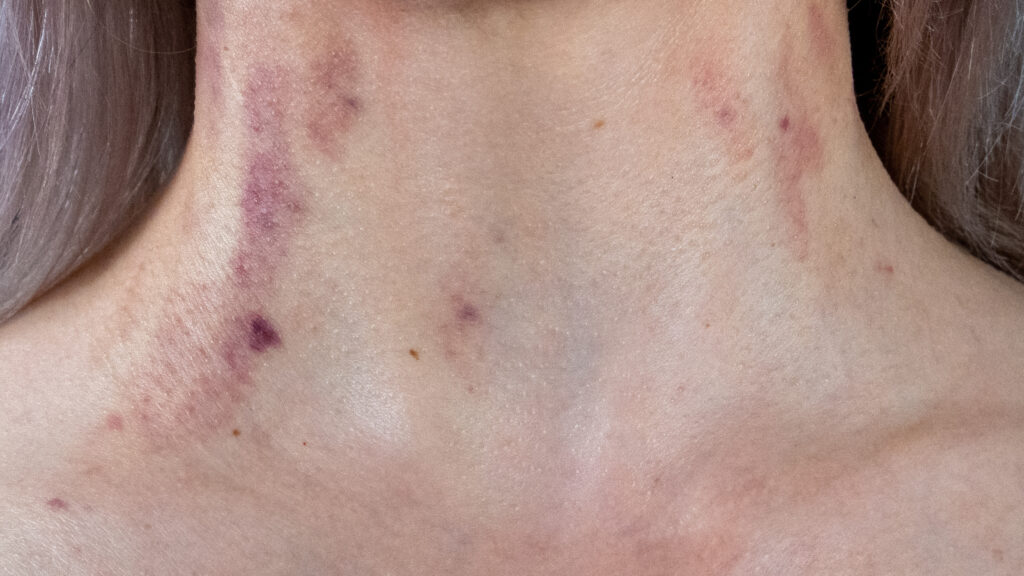The reality
Imagine turning up for duty knowing you might be punched, kicked, spat on or sworn at before the shift ends — and being told it is “just part of the job”. For many health-care workers across New Zealand, that is not exaggeration but everyday truth.

The World Health Organization (WHO) defines workplace violence as “incidents where staff is abused, threatened, or assaulted in the circumstances related to their work, including commuting to and from work, involving an explicit or implicit challenge to their safety, wellbeing, or health”. For nurses, such incidents jeopardise physical security, erode mental health, accelerate burnout and hasten turnover — ultimately undermining patient care.
Global estimates suggest that more than half of nurses experience some form of workplace violence during their careers.1 Emergency departments, mental health units and aged-care facilities remain high-risk environments.2 ,3 The International Labour Organisation has labelled violence in health care a critical occupational safety issue, yet global rates continue to rise.
The pattern in New Zealand is just as alarming. A recent NZNO survey of mental health nurses revealed that 76 per cent had been threatened and 40 per cent physically assaulted in a single year.4 Earlier research showed one in three nurses nationwide endured physical assault over a 12-month period, with verbal abuse even more common.5
Global estimates suggest that more than half of nurses experience some form of workplace violence during their careers.
Violence and aggression — fuelled by chronic understaffing, rising patient acuity and thin on-site security — have become an almost daily reality, leaving many nurses genuinely fearful each shift. Rather than tackle the root causes, many hospitals still normalise aggression with a weary “keep calm and carry on”. These assaults breach the Health and Safety at Work Act 2015, yet many incidents are never reported.6
A senior emergency department nurse, exhausted after another volatile day, summed up the gap between law and lived experience: “If you spent a day with me in ED, you’d never come back.”7 The widening gap between statutory obligation and the reality on our wards and hospitals at large now demands urgent, decisive action.
The cost
Violence leaves scars that go far deeper than bruises. Study have shown that nurses who had been assaulted in the previous year were almost twice as likely to screen positive for anxiety or depression and loss of confidence in their ability to perform their jobs effectively.8 Repeated exposures have been linked to conditions such as post-traumatic stress disorder,9 sleep disturbances, and burnout.10
Burnout, already a severe issue in nursing, is exacerbated when nurses feel unsafe and unsupported in their work environments. Beyond the physical harm, the psychological impact of these experiences is devastating.
The repercussions of workplace violence go beyond individual health and have a significant impact on job satisfaction and retention. Nurses who experience violence often report diminished job satisfaction, which can lead to increased absenteeism and a higher likelihood of leaving the profession.11

This attrition exacerbates the ongoing nursing shortage, placing additional strain on health-care systems and potentially compromising patient care. When nurses are overworked due to staffing shortages, patient outcomes decline. Errors increase, patient mortality rates rise, and health care becomes less safe for everyone.
This is not just a nursing problem but a public health crisis. When health-care organisations fail to protect their staff, they are not just losing nurses, they are jeopardising patient care.
In addition, workplace violence against nurses has significant financial implications, both for the individuals affected and the health-care organisations they work for. The International Council of Nurses estimates that each nurse who quits costs a health system about US$36,900 in recruitment, orientation and lost productivity — money that could have funded extra staff or upgraded security.
When health-care organisations fail to protect their staff, they are not just losing nurses, they are jeopardising patient care.
When violence drives skilled health-care staff out the door and erodes the judgment of those who remain, the whole health system pays. Addressing workplace violence and protecting nurses from harm is not only a moral imperative but also an economic necessity for the sustainability of healthcare institutions.12, 13
Turning the tide
Addressing workplace violence in health care demands a comprehensive, system-wide response. A successful strategy must combine strong prevention programmes, better security, thorough staff training and reliable psychological support. Health services need clear, strictly enforced zero-tolerance policies that include mandatory incident reporting, penalties for offenders and protections for whistle-blowers.14
Under-reporting remains a major barrier. Many nurses and other health workers see violence as part of the job or fear retaliation if they speak up, which blocks progress.15 Studies show staff often stay silent because they lack managerial support or doubt anything will change.16, 17
Many nurses and other health workers see violence as part of the job or fear retaliation if they speak up.
Accurate reporting is essential to understanding the extent of workplace violence and developing effective interventions.18 Health-care organisations therefore need a culture of safety and transparency so nurses feel confident to report incidents without negative consequences.
Physical safeguards are just as important. Hospitals can cut risk by redesigning layouts to remove isolated work areas, improving surveillance, installing rapid-alert systems and increasing security staff in high-risk zones such as emergency and psychiatric units. Such measures have all been linked to notable drops in violent incidents.19, 20

Health-care organisations need a culture of safety and transparency so staff feel confident to report incidents without negative consequences. Concurrently, regular training in verbal de-escalation and non-violent self-defence equips nurses to recognise early warning signs and respond effectively. Simulation-based refreshers ensure these skills remain current throughout a nurse’s career.21, 22
Because violence leaves emotional as well as physical wounds, support services must be part of the package. Nurses who experience violence often develop post-traumatic stress, depression, anxiety, sleep problems and burnout.23
Counselling, peer-support groups and trauma-informed care should be readily available, and flexible rosters or leave options can aid recovery. Research shows that timely emotional support improves long-term wellbeing and helps retain staff.24, 25
Nurses who experience violence often develop post-traumatic stress, depression, anxiety, sleep problems and burnout.
Finally, lasting progress depends on collaboration: nurses, hospital managers, security teams, law-enforcement agencies and policymakers must all contribute to safety planning, nurses must have a genuine voice in decisions, and hospitals must work with legislators to strengthen legal protections.
The New Zealand Nurses Organisation continues to push for decisive action, and union negotiations are vital for ensuring resources are allocated to violence-prevention initiatives. Supporting nurses and other health-care workers and acknowledging their vulnerability to violence is crucial for improving both staff retention and the quality of patient care; therefore, health-care leaders must take immediate and decisive action to ensure that nurses can perform their duties without fear for their safety.
It is time to say, “Enough is enough,” and create a safer, more supportive workplace for those at the heart of health care.
See also: Employers disregard for safety pushes nurse out of the profession.
Adetoun Oyekunle, RN, MNSc, FCNA(NZ), is a care manager at the Capital and Coast Care Coordination Centre, and a doctoral candidate at the School of Nursing, Midwifery and Health Practice, Victoria University of Wellington.
References
- Alnaeem, M. M., Hasan Suleiman, K., Alzoubi, M. M., Sumaqa, Y. A., Al-Mugheed, K., Saeed Alabdullah, A. A., & Farghaly Abdelaliem, S. M. (2025). Prevalence, consequences, and contributing factors beyond verbal and physical workplace violence against nurses in peripheral hospitals. Frontiers in Public Health, 12.
- Aljohani, B., Burkholder, J., Tran, Q. K., Chen, C., Beisenova, K., & Pourmand, A. (2021). Workplace violence in the emergency department: a systematic review and meta-analysis. Public Health, 196, 186-197.
- Duan, X., Ni, X., Shi, L., Zhang, L., Ye, Y., Mu, H., Li, Z., Xin, L., Fan, L., & Wang, Y. (2019). The impact of workplace violence on job satisfaction, job burnout, and turnover intention: The mediating role of social support. Health and Quality of Life Outcomes, 17(1), 93.
- Longmore, M. (2024, June 14). Minister considering mental health nurses’ views after damning NZNO survey. Kaitiaki Nursing New Zealand.
- Willis, J. (2020). Violence and aggression against nurses. New Zealand Nurses Organisation Employment Survey 2019 research advisory paper.
- O’Brien, C. J., van Zundert, A. A., & Barach, P. R. (2024). The growing burden of workplace violence against healthcare workers: trends in prevalence, risk factors, consequences, and prevention – a narrative review. EClinicalMedicine, 72, 102641.
- Kaitiaki Nursing New Zealand. (2025, January 16). ‘I’m gonna rip your head from your body’ — ED nurse tells of constant aggression.
- Shi, L., Li, G., Hao, J., Wang, W., Chen, W., Liu, S., Yu, Z., Shi, Y., Ma, Y., Fan, L., Zhang, L., & Han, X. (2020). Psychological depletion in physicians and nurses exposed to workplace violence: a cross-sectional study using propensity score analysis. International Journal of Nursing Studies, 103, 103493.
- Hong, S., Nam, S., Wong, J. Y. H., & Kim, H. (2023). Post-traumatic responses to workplace violence among nursing professionals: a collaborative and comparative study in South Korea and Hong Kong. BMC Nursing, 22(1), 354.
- Liu, J., Zheng, J., Liu, K., Liu, X., Wu, Y., Wang, J., & You, L. (2019). Workplace violence against nurses, job satisfaction, burnout, and patient safety in Chinese hospitals. Nursing Outlook, 67(5), 558-566.
- Yusoff, H. M., Ahmad, H., Ismail, H., Reffin, N., Chan, D., Kusnin, F., Bahari, N., Baharudin, H., Aris, A., Shen, H. Z., & Rahman, N. A. (2023). Contemporary evidence of workplace violence against the primary healthcare workforce worldwide: a systematic review. Human Resources for Health, 21(1), 82.
- Bae, S. H. (2022). Non-economic and economic impacts of nurse turnover in hospitals: a systematic review. International Nursing Review, 69(3), 392-404.
- Speroni, K. G., Fitch, T., Dawson, E., Dugan, L., & Atherton, M. (2014). Incidence and cost of nurse workplace violence perpetrated by hospital patients or patient visitors. Journal of Emergency Nursing, 40(3), 218-228.
- Recla-Vamenta, G., McKenna, L., & McDonald, E. (2023). Second‐level nurses’ experiences of workplace violence: a scoping review. Journal of Nursing Management, 2023(1), 6672952.
- Al-Qadi, M. M. (2021). Workplace violence in nursing: A concept analysis. Journal of Occupational Health, 63(1), e12226.
- Pich, J., & Roche, M. (2020). Violence on the job: the experiences of nurses and midwives with violence from patients and their friends and relatives. Healthcare 2020, 8(4), 522.
- Spencer, C., Sitarz, J., Fouse, J., & DeSanto, K. (2023). Nurses’ rationale for underreporting of patient and visitor perpetrated workplace violence: a systematic review. BMC Nursing, 22(1), 134.
- Arnetz, J. E., Hamblin, L., Ager, J., Luborsky, M., Upfal, M. J., Russell, J., & Essenmacher, L. (2015). Underreporting of workplace violence: comparison of self-report and actual documentation of hospital incidents. Workplace Health & Safety, 63(5), 200-210.
- Keith, M. M., & Brophy, J. T. (2021). Code white: sounding the alarm on violence against health care workers. Between the Lines.
- Reißmann, S., Wirth, T., Beringer, V., Groneberg, D. A., Nienhaus, A., Harth, V., & Mache, S. (2023). “I think we still do too little”: measures to prevent violence and aggression in German emergency departments – a qualitative study. BMC Health Services Research, 23(1), 97.
- Lyver, B., Singh, B., Balzer, N., Agnihotri, M., Hulme, J., Chan, K., Sethi, R., Reynolds, C., Haines, J., Whiteside, R., Toppings, M., & Schulz-Quach, C. (2025). Exploring the impact of workplace violence in urban emergency departments: a qualitative study. Healthcare (Basel), 13(6), 679.
- Gillespie, G. L., Farra, S. L., & Gates, D. M. (2014). A workplace violence educational program: A repeated measures study. Nurse Education in Practice, 14(5), 468-472.
- Zhang, J., Zheng, J., Cai, Y., Zheng, K., & Liu, X. (2021). Nurses’ experiences and support needs following workplace violence: A qualitative systematic review. Journal of Clinical Nursing, 30(1-2), 28-43.
- Busch, I. M., Scott, S. D., Connors, C., Story, A. R., Acharya, B., & Wu, A. W. (2021). The role of institution-based peer support for health care workers emotionally affected by workplace violence. Joint Commission Journal on Quality and Patient Safety, 47(3), 146-156.
- Wei, H., Roberts, P., Strickler, J., & Corbett, R. W. (2019). Nurse leaders’ strategies to foster nurse resilience. Journal of Nursing Management, 27(4), 681-687.





